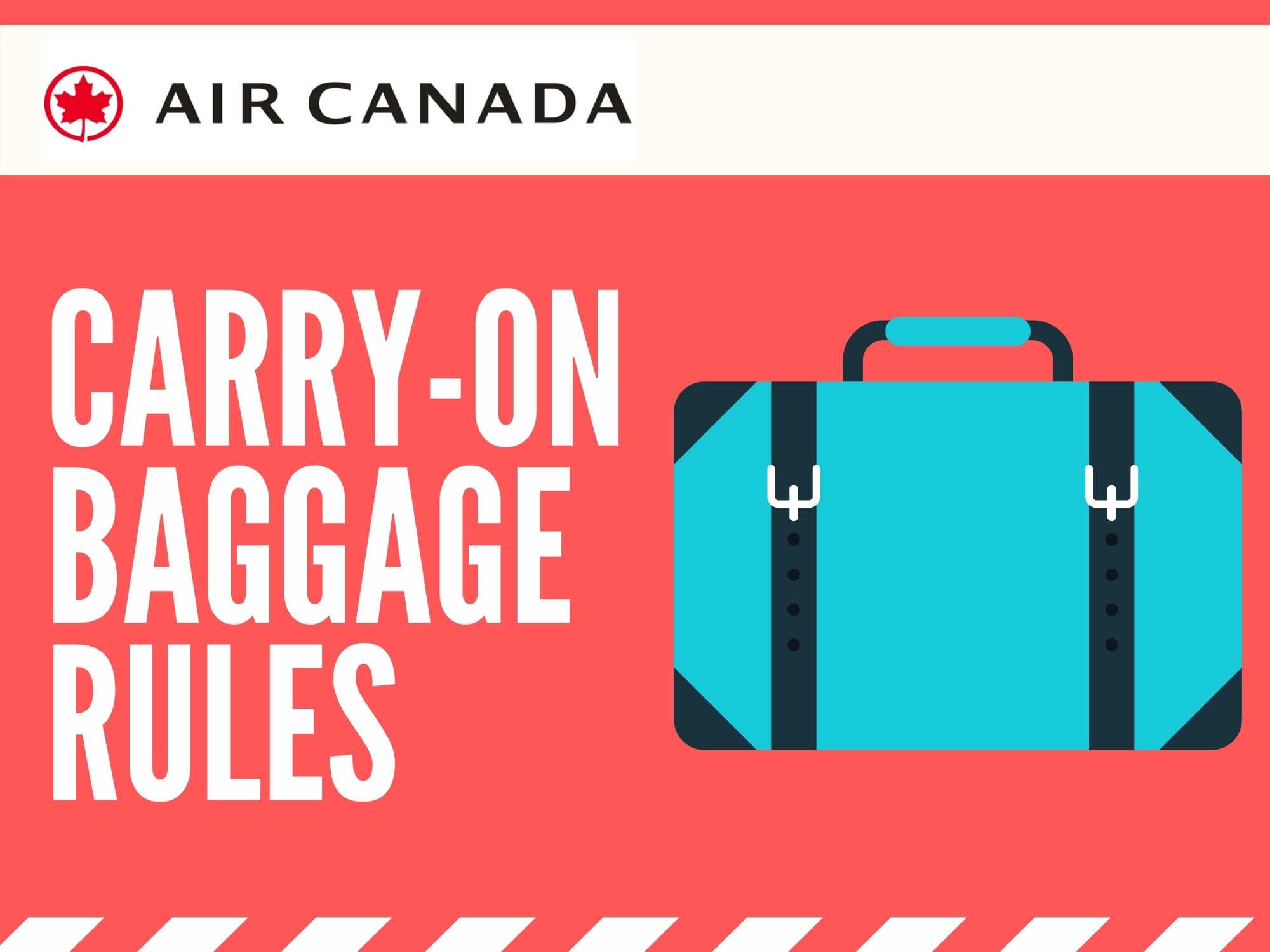

FYI: We may earn a small commission if you make a purchase through a link on our site, at no additional cost to you. Please refer to our Disclosure for more details.
If you are going to be flying Air Canada, they have very specific guidelines for carry-on sizes, liquids, and other unique items that you may want to bring on board. This article will explain everything you need to know about Air Canada’s carry-on policy.
Air Canada allows one carry-on bag and one personal item onboard at no charge. They refer to the carry-on bag as a ”standard article” and the personal item as a “personal article”.
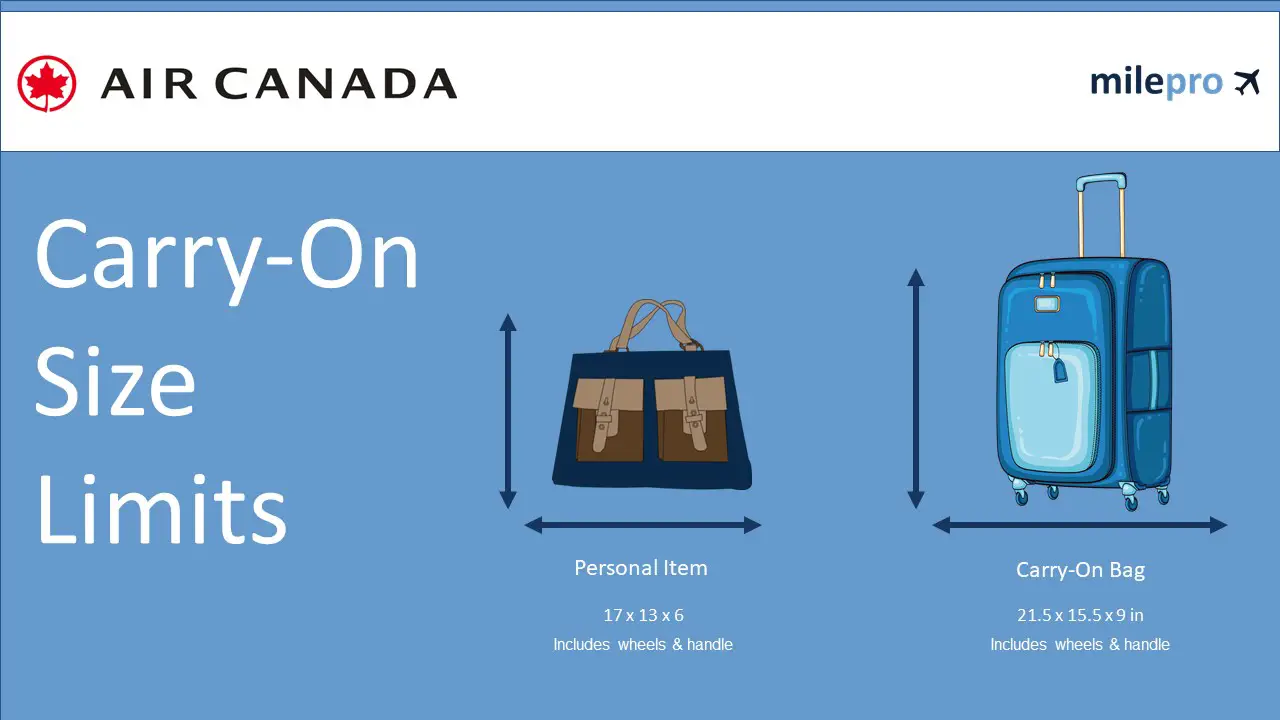
Air Canada’s size requirements for a carry-on are 21.5″ x 15.5″ x 9″ (55cm x 40cm x 23cm).
If you aren’t sure what size your carry-on is, Air Canada provides size check templates located at their ticket counters and gates. But by the time you get to either of these locations, it’s too late if the bag is too big, so better to always know your bag size in advance.
Air Canada is very strict about carry on size limits, so double check to make sure you are in compliance!
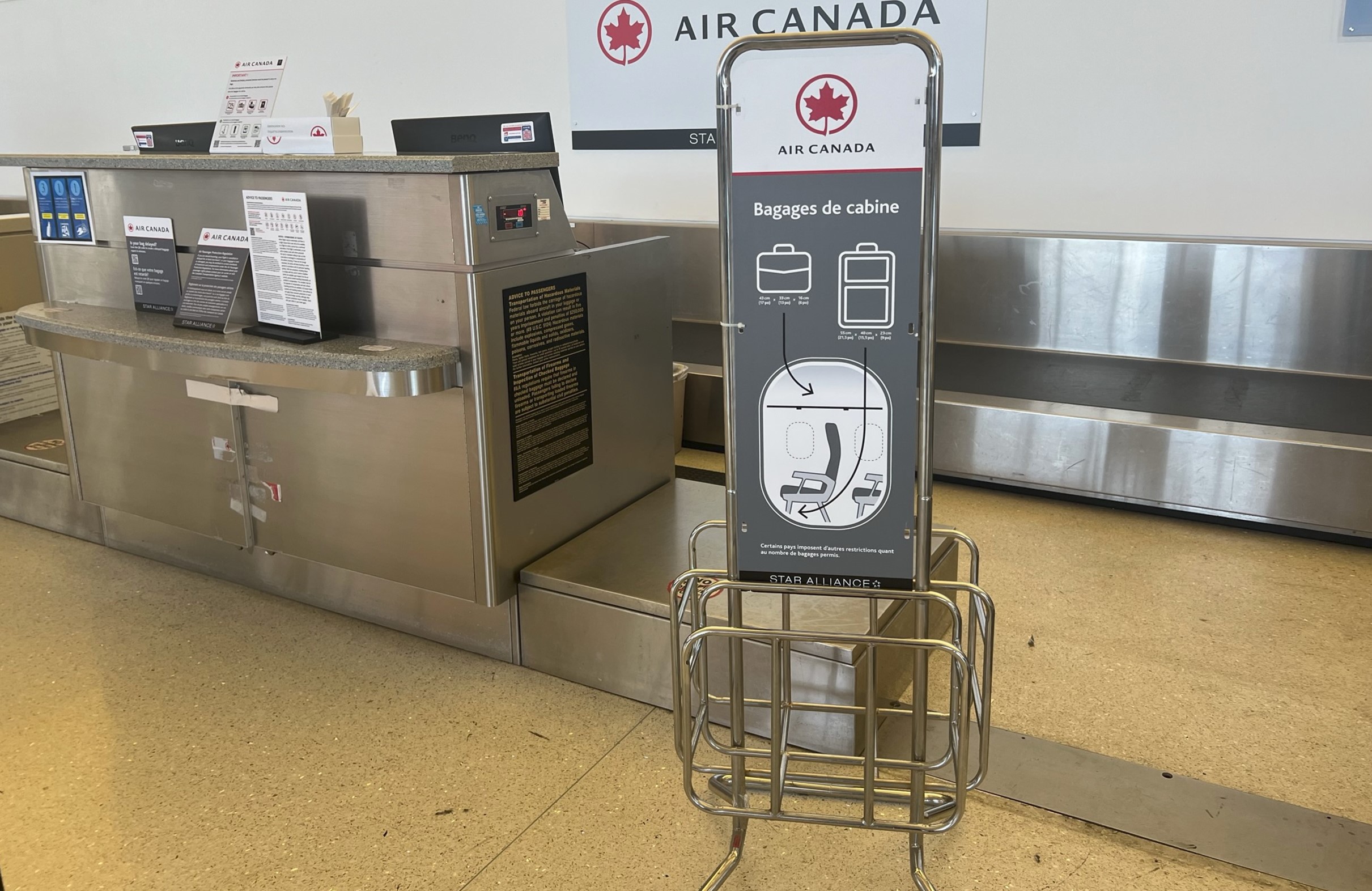
Air Canada recently introduced automated carry-on baggage sizers pre-security in the Montreal (YUL), Toronto (YYZ), and Vancouver (YVR) airports.
These new, touchless machines are easier and faster to use than metal sizers. If you are at one of these airports, make sure that your carry-on bag complies with the sizing outlined above to avoid having to check your carry-on bag at the gate.
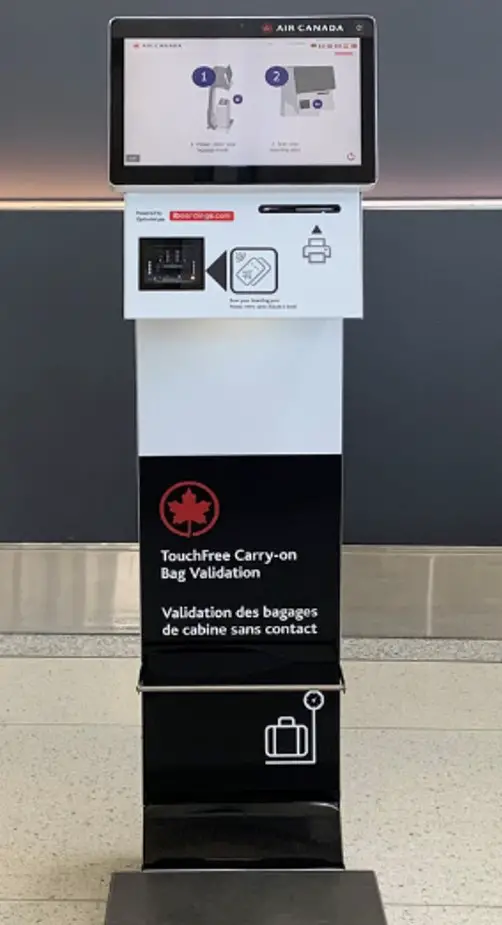
In addition to a carry-on bag, Air Canada allows each passenger to bring one personal item onboard. Personal items include purses, briefcases, cameras, food containers, or laptops (case included).
Your personal item must be stored under the seat in front of you.
As a rule, Air Canada doesn’t impose weight restrictions on a carry-on bag. The only rule they have is that it must be light enough that you can store it in the overhead bin unassisted.
If you are looking for a great carry-on bag when flying Air Canada, I recommend the Travelpro Maxlite 5 Expandable Spinner. I have used this carry-on for years. It’s durable, reasonably priced, and holds everything I need for shorter trips. Plus the spinner wheels make it very easy to get through the airport quickly.
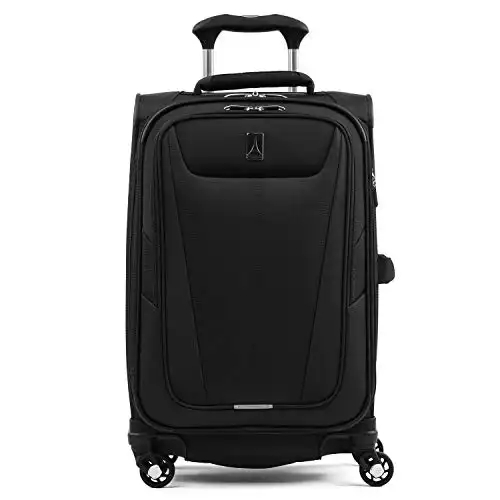
This carry-on bag has been sizer bin tested to accommodate overhead bin space on most major US airlines.
Note: If fully expanded it may not meet overhead bin size limits, so be careful to not overpack.
If you have to check a bag on Air Canada, there are some size and weight rules to be aware of.
All checked bags must adhere to a maximum weight of 50 pounds (23 kg) in economy class or 70 pounds (32 kg) in business class, with maximum linear dimensions of 62 linear inches (158 cm).
Premium Economy, Premium Rogue, and business class each have 2 bags included.
Use the Air Canada checked baggage calculator to determine your free checked baggage allowance, and any additional fees should you exceed it.
The rules for carry-on liquids are set by the CATSA (Canadian Air Transport Security Authority), not by the airline. Air Canada doesn’t have their own specific Liquids Policy, they just enforce the rules and policies of the TSA.
It’s also important to note that the rules for bringing a “liquid” in your carry-on bag differ from those that govern what you can bring in your checked luggage. Liquids in a carry-on bag must be 3.4 ounces or smaller and fit in a 1 quart-sized container. Anything larger must be placed in your checked luggage.
Any liquid that does not meet the CATSA Liquids rule will either have to be checked with your luggage or will be thrown away at the security checkpoint.
The CATSA Liquids rule states that each passenger may carry liquids, gels, and aerosols in travel-size containers that are 3.4 ounces or 100 milliliters. Each passenger is limited to one quart-size bag of liquids, gels, and aerosols. Common travel items that must comply with the 3-1-1 liquids rule include toothpaste, shampoo, conditioner, mouthwash, and lotion.
Here’s a link to the CATSA website advising what food can be brought with you on your Air Canada flight. This applies to food you are bringing from home through security. Once you get through security, you can bring just about any food on the plane that you buy at the airport.
There are certain items that are considered dangerous and classified as a hazardous material. Dangerous goods are prohibited from both your carry-on and checked bag on all flights. These rules are not specific to any airline and are mandated by the Canadian Air Transport Security Authority.
A complete list can be found on the CATSA website, the FAA website, and the TSA website.
